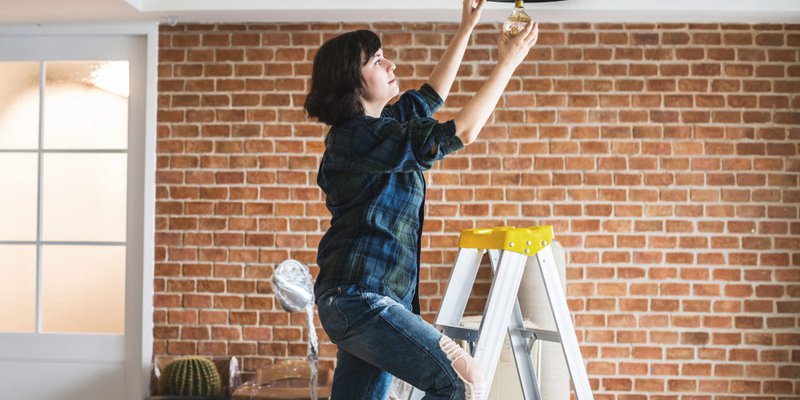
If you are not redirected within 30 seconds, please click here to continue.
Samedi: 10h – 16h HAE

If you are not redirected within 30 seconds, please click here to continue.
If you are not redirected within 30 seconds, please click here to continue.
How Much Will That Upgrade Boost Your Mortgage?

Table of Contents
Picking upgrades is one of the most fun, and financially stressful, parts of buying new construction. You’ve got one chance to let someone else (the builder) worry about adding features — features you’ll have to live with for potentially years.
It can be a daunting task, particularly when your funds are limited.
But saving up thousands of dollars (or tens of thousands, as the case may be) isn’t always necessary. You can always roll upgrades into your mortgage if you qualify.
The problem, from a mortgage approval standpoint, is that this may not be possible for borrowers whose debt ratios are already near the max.
To give you an idea of how upgrades impact your mortgage, we’ve compiled some examples of popular upgrades buyers choose when purchasing a new home. Next to each, we estimate three things:
- How much more you’ll pay your lender each month for that upgrade
- How much more annual gross income you’ll need to qualify for the bigger mortgage, assuming your debt ratios are already at the lender’s limit
- How much more down payment you’ll need, assuming you only have 20% down.
For our sample house/condo purchase, let’s assume:
- Purchase price: $488,000 (CREA’s current average Canadian home price)
- Mortgage: 2.49% 5-year fixed with a 30-year amortization
- Monthly Mortgage Payment: $1,922
And now on to the upgrades…
Kitchen (granite countertop)
- Rough estimated Cost: $2,500-$10,000
- Monthly Mortgage Payment increase: $10 to $39
- Additional Income Required: $390 to $1,560
- Additional Down Payment Required: $500 to $2,000
When it comes to upgrades, kitchen enhancements are viewed by many as having the #1 return on investment. Some cheaper builders include lower-end materials in their standard kitchens, such as laminate countertops that look like they came out of 1990. Others use a low-grade granite or plain Jane quartz. Whatever the case, the majority of buyers prefer a higher quality countertop than the builder’s standard.
Kitchen (upgraded cabinetry)
- Rough estimated Cost: $3,500 to $16,000+
- Monthly Mortgage Payment increase: $14 to $63
- Additional Income Required: $546 to $2,496
- Additional Down Payment Required: $700 to $3,200
Base kitchens these days sometimes start with simple melamine cabinetry. Should you opt to upgrade to higher quality wood, thermoplastic or polyester, not to mention fancy window-pane cabinets and dampers for your drawers, you're looking at significant expense. In most higher-end single-family homes, buyers upgrade the cabinetry, and for good reason.
Main flooring (hardwood floors)
- Rough estimated cost: $10+ per sq. ft., or ~$10,000+ for 1000 sq. ft. (Source)
- Monthly Mortgage Payment increase: $39
- Additional Income Required: $1,560
- Additional Down Payment Required: $2,000
If laminate flooring or carpeting doesn’t suit your taste, upgrading to engineered hardwood or the real deal—solid hardwood—will set your budget back. Developers make much of their money on selling upgrades, with flooring being one of the biggest profit centres and most popular improvements.
Bathroom Flooring (high-end material, such as marble or travertine)
- Rough estimated cost: $15+ per sq. ft., or ~$1,200 for 80 sq. ft. (Source)
- Monthly Mortgage Payment increase: $5
- Additional Income Required: $187
- Additional Down Payment Required: $240
Ceramic/porcelain tile is a common standard in bathrooms. But developers offer a wide selection of alternatives, knowing that some buyers prefer the look and feel of higher-end material, such as marble or stone. The cost can be hard to swallow for many, particularly if you have a large space, or choose to upgrade more than one bathroom.
Bathroom Floor Heating
- Rough estimated cost: $11 per sq. ft, or ~$880 for 80 sq. ft. (Source)
- Monthly Mortgage Payment increase: $3
- Additional Income Required: $137
- Additional Down Payment Required: $176
This is an upgrade many dismiss to save a few bucks. But, with frigid Canadian winters, people often regret that decision once they walk barefoot on cold tiles for the first time. Consider adding heated flooring if it’s an option, at least in the master bathroom. Your feet will thank you.
Lighting Upgrades (e.g. 25 recessed/pot lights)
- Rough estimated Cost: $100-$200 per light ($2,500 to $5,000)
- Monthly Mortgage Payment increase: $10 to $20
- Additional Income Required: $390 to $780
- Additional Down Payment Required: $500 to $1,000
Almost all high-end modern homes now have pot lights. They brighten up room and add value to the property. The lower the cost per light, the more incentive you have to jump at this upgrade. Adding recessed lighting down the road can be a messy hassle, and a sizable out-of-pocket cost.
Structural Upgrade (Higher Ceilings)
- Rough estimated Cost: $10,000+ (Source)
- Monthly Mortgage Payment increase: $39
- Additional Income Required: $1,560
- Additional Down Payment Required: $2,000
These days, 9 feet is standard but many builders also allow optional 10- or 11-foot ceilings, or more. If you’re buying a single-family home with “dated” 8-foot ceilings, this is almost a must-upgrade—if the option exists. An extra foot of headroom adds elegance and spaciousness of your new property, not to mention increased resale value.
Structural Upgrade (Deeper basement)
- Rough estimated Cost: ~$8,000+ (Source, in USD)
- Monthly Mortgage Payment increase: $32
- Additional Income Required: $1,248
- Additional Down Payment Required: $1,600
For those who value headspace throughout the house, and buyers wanting maximum resale value, adding an extra foot to your basement is money well spent. Having this upgrade done at the time of the build could save you tens of thousands of dollars compared to digging out your basement down the road.
The Bottom Line
While some of these additions/upgrades may seem like nothing when added to your mortgage (“what’s an extra $4 per month?”), the costs add up quickly.
Using the rough price examples above, if you opted for the following upgrades, :
- Kitchen cabinets (~$9,750)
- Kitchen counter (~$6,250)
- Hardwood floors (~$10,000)
- Heated bathroom floor (~$1,200)
- Recessed lighting (~$3,750)
…you’d be shelling out a total of $30,950, or an extra $122 in monthly mortgage payments. That still may not seem like much, but paid over the course of a 30-year amortization, you can add another $13,000 of interest on top of that.
But remember, a well-appointed home fetches more at resale. Hence, your return on investment from the right upgrades could easily be positive, all factors considered.
Ultimately, you only get one chance to build from scratch and roll the costs into your financing. So, if you plan to live in the home for a while, invest as much as you can safely afford to have a place that makes you happy and comfortable.
Get money-saving tips in your inbox.
Stay on top of personal finance tips from our money experts!








